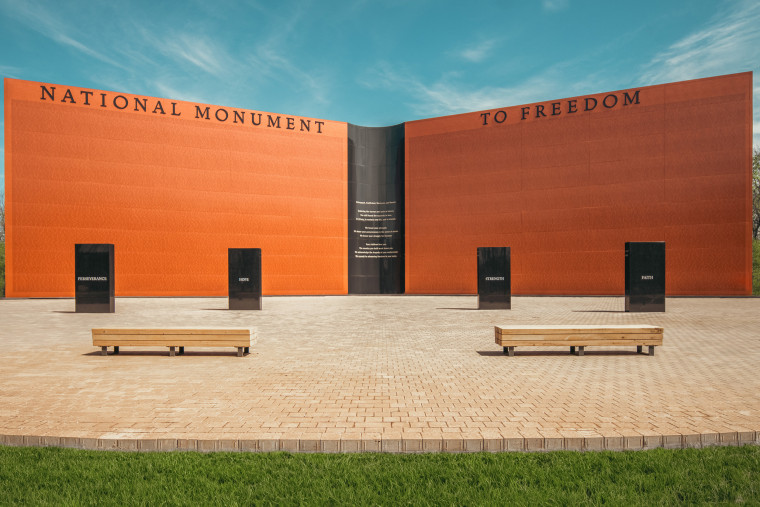For civil rights attorney and renowned social justice activist Bryan Stevenson, it’s not enough to know the history of slavery and the centuries-old struggles of Black people in America. He wants people to see it. Feel it. Touch it.
A new park in Montgomery, Alabama, was conceived to do just that, as visitors of the breathtaking Freedom Monument Sculpture Park will be treated to “an immersive experience” along 17 acres above the Alabama River, which was a primary route to transport enslaved Africans during the slave trade.
The park, opening next week, will be in close proximity to two other creations led by Stevenson: the awe-inspiring Memorial to Peace and Justice, an open-air site that features 800 columns suspended from above, evoking public square lynchings, and the Legacy Museum. A few miles away in downtown Montgomery, that site uses interactive elements to tell the story of the devastation of slavery, Jim Crow, violence and mass incarceration.
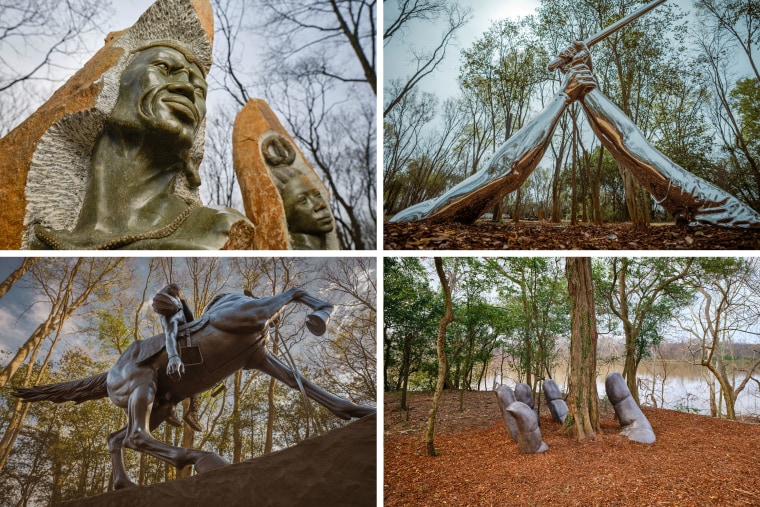
The third addition, the sculpture park, is an effort to humanize the experience of the enslaved person living on a plantation. The centerpiece of the park will be a 100-by-40 feet monument to freedom angled like an open book, listing roughly 100,000 known surnames of people who were emancipated in 1865. The monument is billed as the first of its kind to commemorate the more than 10 million people who were enslaved in America.
Stevenson said in a wide-ranging interview with NBC News’ Lester Holt that he didn’t have “any interest” in visiting plantations, but finally did. The experience was revelatory. “I was intrigued by the authenticity of those places,” he said of the plantations. “And I thought about whether we could create a space like that, centered on the lives of enslaved people and tell this history.”
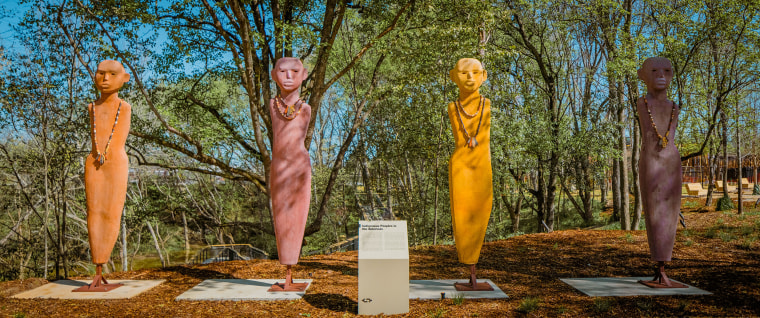
Stevenson, who is also the founder of the Equal Justice Initiative, which has helped free more than 140 death row inmates wrongfully convicted, said the main house on plantations was so prominent that it “marginalized” the slave dwellings.
“And so, creating a space like this that has some historical significance, and then building a kind of a narrative around this land was the objective,” he said. “And we see this as a place to have a deep, immersive engagement with the legacy of slavery, and primarily the lives of enslaved people, so we can have a deeper understanding of that. ... It’s about humanizing it.”
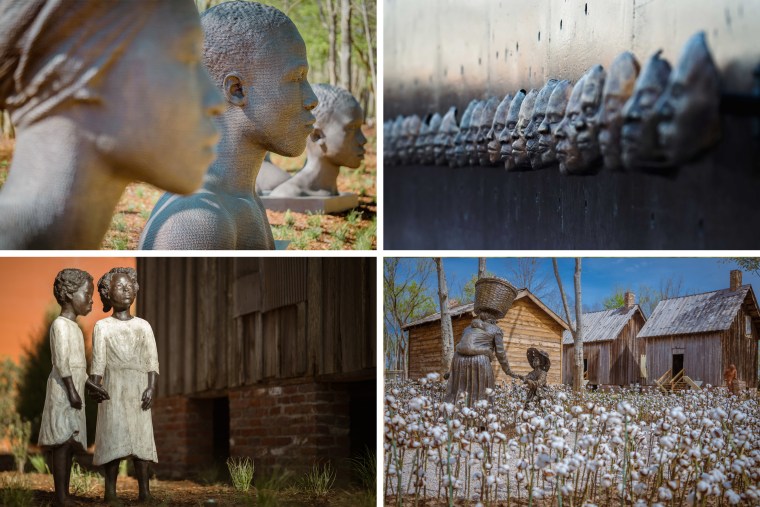
That’s why, Stevenson said, the sculptures are essential. “There’s not much in the visual record of that era that helps you get a sense of the humanity of these people. But artists have done an amazing job.”
The themes of the sculptures vary. Some illustrate the pain and suffering of being enslaved, while others illuminate the dignity of the enslaved families. And several sculptures display the strength and resolve that permeated the enslaved as they fought to survive the brutality of slavery.
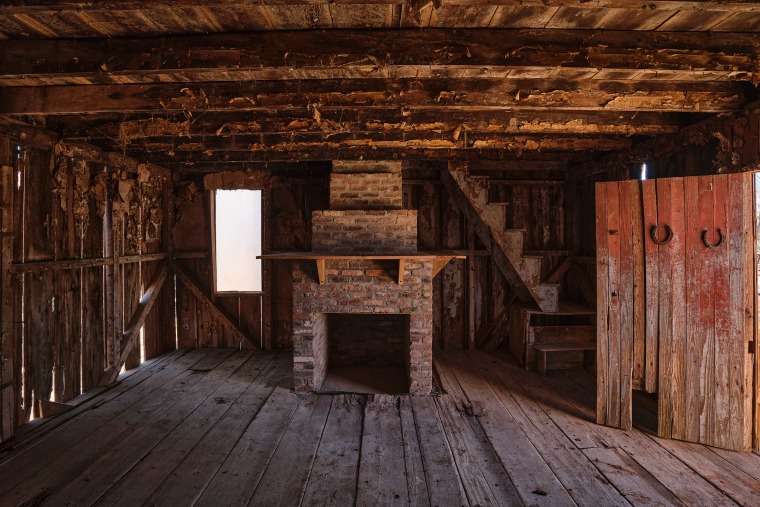
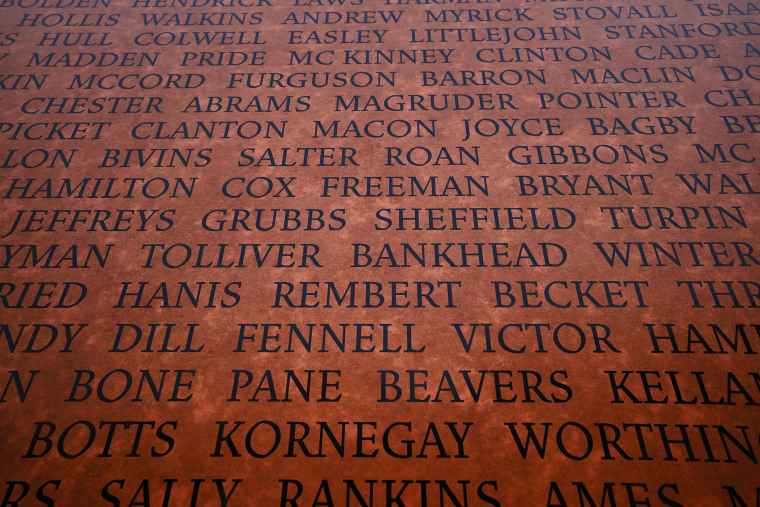
Almost all of the artists are Black, African or indigenous, said Stevenson, who was the subject of the 2019 film “Just Mercy,” starring Michael B. Jordan.
Like his other efforts, Stevenson’s Freedom Monument Sculpture Park is another teaching apparatus at a time when there are mounting attacks to eliminate Black history from being taught in public schools.
“It’s been a lifelong ambition to just kind of get people to reckon with truth,” Stevenson said. “I’ve been trying to get to a place where I feel like we can claim we have overcome all of the bigotry that has defined our nation. But … we can’t get there if we don’t talk honestly about this history.”
